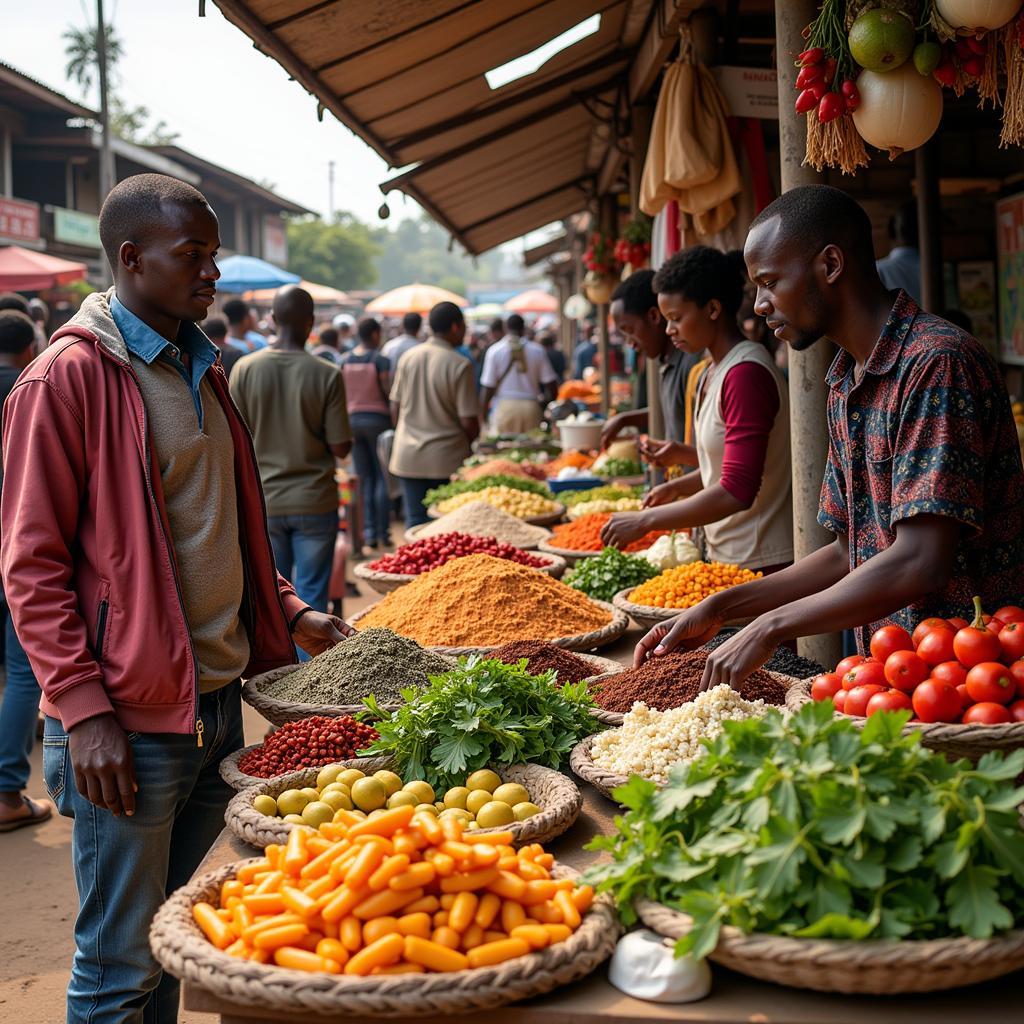The Splitting of the African Continent: A Geological Drama Unfolding
The splitting of the African continent is a fascinating geological process that is slowly reshaping the Earth’s surface. This ongoing drama, driven by powerful forces deep within the planet, is creating a new ocean basin and transforming the landscape of East Africa. Let’s delve into the science, the impact, and the future of this continental rift.
You can find some hilarious clips showcasing the diverse cultures of the continent at African funny clips.
Understanding the Forces Behind the African Continent Splitting
The African continent splitting is primarily caused by the movement of tectonic plates, specifically the Nubian and Somalian plates. These plates are diverging, or moving apart from each other, along the East African Rift System (EARS). This rift system is a complex network of valleys and volcanoes that stretches for thousands of kilometers, from the Red Sea in the north to Mozambique in the south.
The Role of Mantle Plumes and Plate Tectonics
Mantle plumes, which are upwellings of hot rock from deep within the Earth’s mantle, are thought to play a significant role in the rifting process. These plumes exert tremendous pressure on the overlying lithosphere, causing it to thin and stretch. As the lithosphere thins, it becomes more susceptible to fracturing, leading to the formation of faults and valleys. This ongoing geological process is a remarkable example of plate tectonics in action. The continuous separation of the Nubian and Somalian plates contributes to the gradual widening of the rift valley.
What is the East African Rift System (EARS)?
The East African Rift System (EARS) is a series of interconnected valleys and volcanoes that mark the boundary between the diverging Nubian and Somalian plates. It’s a geographically active region characterized by volcanic activity, earthquakes, and the formation of new land.
The Impact of the Splitting on the African Landscape
The splitting of the African continent has profound implications for the region’s geography, environment, and human populations. The formation of new land, the changing climate, and the increased geological activity are all shaping the future of East Africa. Learn more about the specific countries within the rift valley at African country in great rift valley.
The Formation of a New Ocean Basin
As the rifting continues, a new ocean basin is gradually forming. The Red Sea and the Gulf of Aden are considered early stages of this process. Over millions of years, the rift valley is expected to widen and deepen, eventually flooding with seawater and creating a new ocean separating the eastern portion of Africa from the rest of the continent. Want to explore the unfolding drama of the continent’s break? Check out African continent break story.
Environmental and Ecological Changes
The splitting of the African continent is also driving significant environmental and ecological changes. The formation of new mountains and valleys is altering rainfall patterns, creating new habitats, and influencing the distribution of plant and animal species. These changes present both challenges and opportunities for the region’s biodiversity.
The Future of the African Continent Splitting
The splitting of the African continent is a slow and ongoing process that will continue for millions of years. Scientists are using a variety of techniques, including GPS measurements and satellite imagery, to monitor the movement of the plates and predict the future evolution of the rift. You can also find fascinating content related to African continent splitting.
Predicting the Timeline and Extent of the Split
While the exact timeline and extent of the split are difficult to predict with certainty, scientists anticipate that the rifting will continue to widen and deepen. The formation of a new ocean is a likely outcome, although the precise timing remains uncertain.
“The African continent splitting is a dynamic and complex process,” explains Dr. Amina Mohamoud, a renowned geophysicist specializing in African tectonics. “It’s a reminder of the powerful forces that shape our planet and the constant evolution of the Earth’s surface.”
Conclusion: A Continent in Transformation
The splitting of the African continent is a remarkable geological phenomenon that offers a glimpse into the powerful forces shaping our planet. This ongoing process is transforming the landscape of East Africa, creating new landforms, and influencing the region’s environment and ecology. As the rifting continues, scientists will continue to monitor its progress and uncover the secrets of this dramatic continental transformation. The splitting of the African continent reminds us of the dynamic nature of our planet and the ever-changing face of the Earth. For more entertaining content related to Africa, check out African female comedian youtube.
FAQ
-
How long will it take for the African continent to completely split?
- The complete split is estimated to take tens of millions of years.
-
What are the main causes of the African continent splitting?
- Mantle plumes and the divergence of the Nubian and Somalian tectonic plates.
-
Is the splitting of the African continent dangerous?
- The process itself is slow, but associated phenomena like earthquakes and volcanic eruptions can pose risks.
-
Will the splitting create new countries?
- The geological changes could potentially lead to the formation of new landmasses and possibly new nations.
-
How are scientists studying the splitting process?
- Scientists use GPS, satellite imagery, and geological surveys to monitor the rift’s progress.
-
What is the significance of the East African Rift System?
- It’s a key location for studying plate tectonics and continental rifting.
-
What are the environmental consequences of the split?
- The split is altering rainfall patterns, creating new habitats, and impacting biodiversity.
Scenarios & Related Questions
What happens if volcanic activity increases significantly during the splitting process? How will the changing climate affect the populations living along the rift valley? What are the potential economic implications of the formation of a new ocean?
Further Exploration
Explore other fascinating articles on our website about the African continent, including its rich history, diverse cultures, and stunning wildlife.
Contact Us
For further assistance or inquiries, please contact us:
Phone: +255768904061
Email: kaka.mag@gmail.com
Address: Mbarali DC Mawindi, Kangaga, Tanzania.
Our customer service team is available 24/7.


